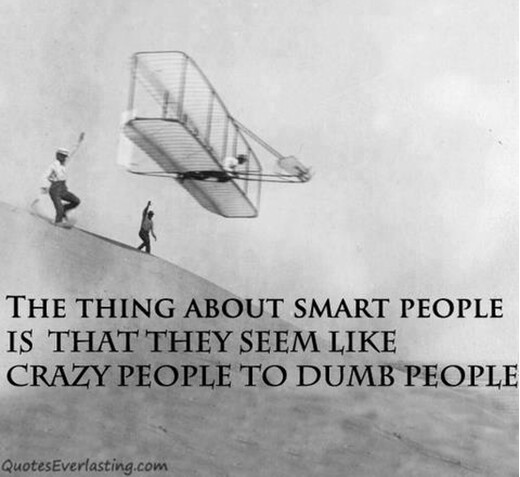 The life of a hummingbird rarely exceeds four years. The life expectancy of a Marketing Director (or CMO or VP of Sales & Marketing) at any given company is even less than that. The typical tenure these days is a little more than 3 years and this is up from about 26 months in 2004. In fact, as you stroll through the offices at many companies, it’s an easy bet which executive is a dead man (or woman) walking: the Marketing Director.
The life of a hummingbird rarely exceeds four years. The life expectancy of a Marketing Director (or CMO or VP of Sales & Marketing) at any given company is even less than that. The typical tenure these days is a little more than 3 years and this is up from about 26 months in 2004. In fact, as you stroll through the offices at many companies, it’s an easy bet which executive is a dead man (or woman) walking: the Marketing Director.
What are some of the reasons causing such a short tenure? What are some things a Marketing Director can do to be successful? How much of that is on the company and how much is brought on by the individual?
Ok, so how much of this is do you see or experience in the world that you live in? If you’re like the vast majority of Marketing Directors in this country, you see any of these issues popping up on a fairly regular basis. Here are a few things to consider in order to make sure you’re not having to call your executive recruiter anytime soon.
While the marketing landscape changes so quickly, the good news is that a Marketing Director can succeed in the face of headwinds no matter which way he/she faces. It may be more challenging than it should be, but stand true to your brand, be current and always in the know, and be bold enough to make a difference….otherwise, chances are, you might be dusting off that resume.
####
Rolf Gutknecht is vice president, director of account services for LA ads. To discuss your thoughts with Rolf on this blog or any marketing matters, email via this link, or visit www.LAadsMarketing.com. You can also connect with Rolf on LinkedIn.
 A couple of weeks ago, I was at a trade show and after walking up and down the aisles, it occurred to me just how much of the same-old, same-old I was seeing. Nothing really new (unless you consider irrelevant modifications like changing the color from blue to orange and different shaped bottles as new). There was nothing that I can say showed me that companies were spending any amount of time and energy in looking at the marketplace with an eye toward identifying the opportunities that trends in customer purchasing or behavior would present.
A couple of weeks ago, I was at a trade show and after walking up and down the aisles, it occurred to me just how much of the same-old, same-old I was seeing. Nothing really new (unless you consider irrelevant modifications like changing the color from blue to orange and different shaped bottles as new). There was nothing that I can say showed me that companies were spending any amount of time and energy in looking at the marketplace with an eye toward identifying the opportunities that trends in customer purchasing or behavior would present.
With that as that backdrop, on my flight home I started thinking about the ways that the marketing department within an organization can start the process of getting out in front of their competitors in order to seize on untapped business opportunities and identify trends before their competitors do. It’s really not as difficult as a lot of people think, but it does require that one to think more about the future by asking questions around the idea of “so what does that mean?” As an example of this, watch the video clip that stars Kevin Spacey for E*Trade.
In short, imagine if you could get a 12-18 month head-start on everyone else in your industry. Wouldn’t even 6 months be nice? Wouldn’t that make a huge difference in how your business runs? Maybe you could get the jump on your competitors every single time you make a move. Heck, this would even apply not only to products and services but also to channels, processes and even personnel hires.
Before we get into the ways that one might start spotting new trends, it’s important to understand a few things. So here goes:
OK, with that as the backdrop to trend watching, let’s walk through the process of how and where to find possible trends:
Now that you’ve identified some trends, where do you go from there? First, think about the consequences if a trend continues to spread. How will the trend change what people buy? What will happen if the trend grows in strength? Here’s where you have to ask yourself a lot of questions about “what does that mean?” In short, imagine the future (and your future) if the trend plays out. After you have in your head what the trend might look like, identify what need is currently being unmet that, if created, will help customers take advantage of the future scenario. And then lastly, define what the product or service opportunity is— that being the space between what is currently available and what people who would be effected by the future trends will want.
Here’s the choice you have: As a company, you can sit around and talk about strategies year after year. You can even hire consultancy firms to tell you what’s hot…last year. You can scratch your heads at all that new stuff that you’re seeing but end up sticking to known quantity. Or, you could wrap your mind around the potential that a new product or service has to offer. You create your own crystal ball!
Maybe the people who are good in spotting trends and anticipating what people want are able to imagine what others can’t. These trend spotters collect relevant data from what they read and hear and can read between the lines. Hopefully you’re one of those people.
Just remember, the sooner you spot an opportunity, the more time you have to leverage the tar out of it. And the faster you can move on an opportunity, the more likely it is that you will score a win. Keep your eyes open.
####
Rolf Gutknecht is vice president, director of account services for LA ads. To discuss your thoughts with Rolf on this blog or any marketing matters, email via this link, or visit www.LAadsMarketing.com. You can also connect with Rolf on LinkedIn.
 I think we can pretty much all agree that most everyone, be it on the job or in our personal lives, is stretched thin on time. And this crunch for time has shortened our attention spans and concentration levels to the point that we’re lucky if we even remember some bits and pieces of phone conversations, face-to-face discussions, emails, etc., let alone those marketing messages that other companies put out in the marketplace in hopes we’ll act on them. Who has time for them?
I think we can pretty much all agree that most everyone, be it on the job or in our personal lives, is stretched thin on time. And this crunch for time has shortened our attention spans and concentration levels to the point that we’re lucky if we even remember some bits and pieces of phone conversations, face-to-face discussions, emails, etc., let alone those marketing messages that other companies put out in the marketplace in hopes we’ll act on them. Who has time for them?
With that scenario playing itself out in most everyone’s lives, marketers have a hard nut to crack when it comes to creating marketing messaging that sticks in order to counterbalance people’s shrinking attention span. Every marketer faces this reality daily. As most of us have heard, the average attention span does not exceed eight seconds (ten years ago it was 12 seconds). Comparatively, the attention span of the average goldfish is nine seconds. Capturing attention within eight seconds is a formidable challenge. As marketers, we have enough trouble with summarizing a message into a small packaging label, a web banner, a half page magazine ad, an outdoor board, or other media channels where the time or space allows for only something along the lines of a “quick bite.” Remember when the 60-second TV commercial was the norm? Then it went to 30 seconds and now we’re seeing more and more 15’s. And Vine built a platform around 6-second video posts and YouTube incorporated a “skip ad” option on their commercial videos after five seconds. Any more than that, and viewers lose interest and get really ticked off .
Oh, and let’s not forget about how the shrinking attention span has also led to people fidgeting between multiple screens (their TVs, computers, smartphones and tablets) at a rate of up to 21 times per hour, according to a recent study. Guess the average minutes a day that a person spends on their smartphone? 147 minutes. Now compare that to just under 120 minutes per day watching TV. Boy, we are distracted!
Growing evidence blames Internet, TV and computer games for creating shorter attention spans. Bombarded daily with mind-boggling amounts of things to read, watch and respond to, most of us have real difficulty paying attention on one subject for longer than a couple of seconds. How to fight against this rapidly decreasing attention span of an average consumer? How do you market to a group of people who don’t have enough time to listen to everything you have to say? It’s hard, and it’s getting harder to get and keep anyone’s attention.
Well, some marketers are trying to get people’s attention by going where more people seem to be…on social media, the “Land Of A Million Tweets, Comments And Posts” that repopulates itself every few days, or hours…or even minutes. And then there’s special offers, sales, email blasts and just about anything else that has a slight chance of possibly working. In doing so, I’d argue that for many companies, they’re not breaking through the clutter but instead adding to it.
It’s more important than ever to hold the attention of customers and prospects quickly and interactively in ways that weren’t possible or necessary in years past. So here are 5 messaging tips that will go a long way to having your audience stay tuned rather than drift away:
Now, at a time when attention spans are shorter and less focused than ever, you need to be more focused on making sure your marketing messaging doesn’t fall on deaf ears. There is too much noise because too many people want to be noticed without having to say anything worth hearing. The genuine voice sounds different and therefore it can be more easily discerned. The problem is, because of so much noise, people are hardly listening any more – expecting to hear nothing of worth anyway. Make every effort to be the voice that gets heard.
####
Rolf Gutknecht is vice president, director of account services for LA ads. To discuss your thoughts with Rolf on this blog or any marketing matters, email via this link, or visit www.LAadsMarketing.com. You can also connect with Rolf on LinkedIn.
“Life can only be understood backwards; but it must be lived forwards.” – Soren Kierkegaard
 The last quarter of 2014 is almost history and as we stand poised to welcome 2015 in just a matter of days, we hope for a future that is successful, rewarding and where your dreams will be realized. Having seen the start of more than a few “new business years” during my career, I’ve learned that you can do one of two things in preparation for the coming year. You can yet again try to create a brand new marketing strategy for the coming year or you can pause, look back and do some serious reflecting, resolving to change, or improve some aspect about how you will initiate your future marketing campaigns. For some people, looking back over the past year may be something better left in the rearview mirror; on the other hand, burying your head in the sand can be seen as the primary ingredient in a recipe for another disappointing year…and you know how much the CEO/President/Owner/Founder loves that kind of thinking. So before one celebrates the dawn of a new year…take time to ask yourself what are you going to do to change? What does success in 2015 look like to you and your executive management team?
The last quarter of 2014 is almost history and as we stand poised to welcome 2015 in just a matter of days, we hope for a future that is successful, rewarding and where your dreams will be realized. Having seen the start of more than a few “new business years” during my career, I’ve learned that you can do one of two things in preparation for the coming year. You can yet again try to create a brand new marketing strategy for the coming year or you can pause, look back and do some serious reflecting, resolving to change, or improve some aspect about how you will initiate your future marketing campaigns. For some people, looking back over the past year may be something better left in the rearview mirror; on the other hand, burying your head in the sand can be seen as the primary ingredient in a recipe for another disappointing year…and you know how much the CEO/President/Owner/Founder loves that kind of thinking. So before one celebrates the dawn of a new year…take time to ask yourself what are you going to do to change? What does success in 2015 look like to you and your executive management team?
Speaking for myself and our firm, the end of each year is met with a healthy dose of optimism for the coming year. We see 2015 through a lens of hopefulness, that things will continue to get better. Is that just us or will you and your organization also view the coming year with a level of anticipation that you haven’t had for a few years? Hey, it’s been tough for most everyone out there but let’s remember that at least a few organizations — perhaps some of your own competitors — have fared better than most despite these trying times. So what have they done to plot a course for a more optimistic and profitable path for success in 2015?
Depending on marketplace factors coupled with how well you were able to strategically position and market your company, the past year was either seen as a success or another year of same-old, or even a disappointment. The question that begs to be asked here is, how much of last year’s growth or lack thereof was because of something you had no control over, such as good or bad luck, and how much was because of something you specifically chose to do or not do? I’ve found through personal experience this is the time to be totally honest with yourself. As Sigmund Freud said, “Being entirely honest with oneself is a good exercise.”
Hey, I’m all for a bit of luck but you probably don’t want to continue betting future success on lucky things happening in the coming year. With this in mind, here are a few questions to ask yourself as thought starters as you begin the process of looking in the rearview mirror to last year and through your windshield to the next:
As marketers, one thing we know for sure is that change will not stop in 2015. The economy will continue to shift on us —hopefully with less drama. But by reflecting back on 2014, taking control of your marketing activities rather than being tossed around by the waves in the marketplace, along with thinking optimistically about what 2015 can hold, 2015 might actually be a year worth celebrating. It will be for us and hopefully will be for you as well.
####
Rolf Gutknecht is vice president, director of account services for LA ads. To discuss your thoughts with Rolf on this blog or any marketing matters, email via this link, or visit www.LAadsMarketing.com. You can also connect with Rolf on LinkedIn.

Making this kind of offer won’t necessarily produce an immediately measurable return. But its impact will ultimately return value many times over.
If you’re tracking financial return on investment (ROI) as the sole benchmark to determine if your marketing programs are working, then you need to know that there are other ways in this new world to go about doing so because otherwise you’re missing a big part of the picture.
You see, as much as we like to talk about ROI being a critical metric for marketing success, there are not many organizations that really calculate this metric — I mean really calculate it. The reason being that linking ROI to business efforts is just plain difficult, especially as a cumulative total, due to the blurring of cross-channel integration, competitive activity and economic and marketplace factors. The truth is, most CMOs have a general sense for what’s working and what’s not with respect to overall marketing spend and therefore overall ROI is calculated with experience and intuition (not on a spreadsheet).
The thing is, marketing isn’t black and white, and there are a number of marketing objectives don’t link directly to revenue / return. What if the objective is branding or awareness? You might expect an indirect impact on sales. You would also measure the success of the campaign very differently; maybe you just want to see if more people visited the website, or visited the store.
Enter Return on Objectives. Analyzing ROO means that you accept and understand that not all goals are measurable with hard data. Sometimes, marketing efforts simply help a business move in the right direction to meet its long-term objectives. For example, it could take the form of a business that develops a social media plan and creates a library of content on its website blog page, Facebook page, YouTube channel, and so on over the course of a year, all of which will undoubtedly move the company closer to its long-term brand building objectives.
There has been and always will be two schools of thought on the value of hard vs. soft metrics. Solely relying on traditional ROI isn’t enough and there will always be marketers who don’t like the fact that soft metrics play an important role in marketing today, but without considering them, a big piece of the story is missing. For example, the value of word-of-mouth marketing and an emotional connection to brands can’t necessarily be quantified. But that doesn’t make it any less important. A CEO, CMO, or CFO who ignores the less tangible importance of engagement and consumer perceptions of brands will limit the potential growth of those brands. In today’s world, that’s a big mistake. The best marketing leaders and teams can marry the two — hard and soft metrics — in order to make the best strategic decisions for the company.
Think of it like this: If short-term financial ROI is the single factor with which marketing activity is measured against, many large successful brands would never advertise. For most business types, only a smaller proportion of marketing communication generates a short-term purchase response, and this is particularly true for well-established mature brands.
Investment in marketing communication for some brands should therefore be seen for often what it really is: reinforcing/strengthening favorable brand perceptions and insuring the brand’s strength and status for the future. It isn’t always a math calculation where the dollars spent have to exceed dollars coming in. So much of building brand value is tied to emotional involvement in a brand, and that’s even harder to quantify than social media conversations and sharing. However, I don’t think anyone would argue that emotional involvement doesn’t add to equity (at least I hope they wouldn’t). Otherwise, a brand like Nike would be just another athletic shoe company. Disregarding those emotions because they can’t be precisely quantified would be a tragic mistake.
As well, what current ROI metrics don’t account for are what I’ll call “lurkers,” the people that are watching and waiting to take action. If we as marketers bail too soon based on the short-term analysis of results, then we miss the boat. How many of us have at one time or another been a “lurker?” All of us, right?
That said, without a doubt most marketers want to prove that the dollars they have invested have achieved measurable success and cost effectiveness. For me, ROO can be defined as the “Total cost of campaign divided by the number of objectives met.” To do it right, the key to measuring ROO is that specific objectives need to be created from the outset of a project along with a specific end date. In other words, the marketer must plan for measurement at the same time that the campaign is being developed.
So, instead of evaluating success based on revenues, marketers should take a look at measuring returns based on whether their objectives, from brand awareness to customer relationship-building, are met. Completion of these objectives, rather than dollars earned, will determine the success of a given campaign. As a result, ROO results will come in all shapes and sizes, but will not necessarily be defined in immediate dollars and cents…just like the offer in the photo above probably achieved for Plaza Cleaners.
My point is that ROI numbers don’t tell the entire story and relying on hard metrics alone isn’t enough. The hard and soft data is available to you for you to use it. You can bet your competitors are…or will be doing so soon.
####
Rolf Gutknecht is vice president, director of account services for LA ads. To discuss your thoughts with Rolf on this blog or any marketing matters, email via this link, or visit www.LAadsMarketing.com. You can also connect with Rolf on LinkedIn.
 A few weeks ago I wrote about the Seven Deadly Sins of Marketing and hopefully all of you sinners out there have repented. Given the response, I thought it might be good to talk about the flipside, the Seven Cardinal Virtues of Marketing. To paraphrase Abraham Lincoln, “Vices and virtues: Can’t have one without the other!” Anyway, as individuals responsible for the marketing activities of the organization, it’s worth reminding ourselves that we do have a responsibility to “behave” in a way that allows for the marketing function to perform its responsibilities in a manner that helps the company survive and thrive.
A few weeks ago I wrote about the Seven Deadly Sins of Marketing and hopefully all of you sinners out there have repented. Given the response, I thought it might be good to talk about the flipside, the Seven Cardinal Virtues of Marketing. To paraphrase Abraham Lincoln, “Vices and virtues: Can’t have one without the other!” Anyway, as individuals responsible for the marketing activities of the organization, it’s worth reminding ourselves that we do have a responsibility to “behave” in a way that allows for the marketing function to perform its responsibilities in a manner that helps the company survive and thrive.
Patience
In today’s world of “needed it yesterday,” too many marketers see patience as something that can’t be accepted by the company because it’s “just not how we roll.” Well, as a marketers we need to continue to be reminded that patience is a valuable skill and critically important to the growth of the company. For example, staying the course of what the brand’s strategy is when you know it is the right course, rather than over-reacting to others’ activities. As well, patience guides how long to stick with your marketing message. It may feel like it is old and stale to you but that’s because you’re exposed to it daily while prospects and customers aren’t nearly as familiar with it. That doesn’t mean you should keep repeating the same thing over and over again, especially if a better approach is required. Be patient with yourself and resist the temptation to compare your progress to that of others. Hey, it takes some time to set up a lead generation and follow-up machine that will crank out good results month-after-month, right?
Diligence
Sometimes the best course is to apply a little dose of patience and sometimes one needs to persist and push through the challenge at hand. Be diligent in doing something every day to move your marketing and sales programs forward. You can always do a bit more to optimize the website, create more content, tighten your message or figure out how to better add value to the selling process. Keep learning the new skills necessary to succeed in a changing marketing world. Since the web is such a powerful awareness and lead generation tool, anything you can learn about how it works is helpful. With social media becoming an increasingly more visible component in your marketing efforts, be determined to write that blog post, send some tweets, utilize LinkedIn, etc., even when you don’t feel like it. You never know when your efforts will pay off. In short, it’s keeping the brand’s finger on the pulse of the market, and working to respond properly to it.
Fortitude
News Flash! The marketplace is as fluid as water so the watchwords for the day are “Stay Alert and Stay Brave.” “The Fast and the Furious” isn’t just a name of a movie series, it’s also how the Net moves. It can also describe competitive activities and certainly how your customers think and take action. Keep in close touch with those factors that will either lead you to success or be the things that will keep you up at night. Do your best to stay up to date by doing the necessary customer and competitive research by seeing what is being written and said about you online from Epinions to Yelp and many more review sites. Remember, “not knowing” is just that and more than one company has been blindsided by bad sales results because they imagined they knew what was going on in the marketplace and what customers and prospects thought of them. Sure they did.
Honesty/Justice
Customers know when companies are not being upfront or honest with them by what they see, read or hear in the marketing or advertising. They know when you’re trying to hide behind the small legal type or legal mumbo-jumbo. And guess what? As people who really dislike honesty, they bail…and they let others know about it as well. Conversely, think like your customers: If you had a problem with an order and wanted it resolved, you’d want to be treated fairly—and so would they. Make sure that your marketing material and activities reflect a company who respects and values their customers…because we know that they’re not easy to come by.
Faith/Courage
Believe in yourself and what your company is marketing. Know that marketing does work, regardless of the naysayers throughout the organization from C-Suite to the folks in finance and sales. My business partner is quick to point out that marketing is a self- fulfilling prophecy: If you believe in it, you’ll commit to it, invest in it and give it time to work… and it will. Or, if you don’t really believe in it, you’ll hold back, and guess what? It won’t work, and you’ll be right as well. If we’re honest with ourselves, there are times when we’ve wondered if what we’re doing is really achieving the goals we’ve set forth. Realize that success usually comes only after setbacks. View failure as an unavoidable component of success.
Prudence
Planning and acting can be difficult for a lot of marketers who often fear looking indecisive or making a mistake when the firm’s future—or their job—is at stake. Making decisions that are politically expedient, that travel the path of least resistance or avoid confrontation are dangerous and often unproductive without thinking through the ramifications of the decision. And when that happen, like clockwork, a marketing problem raises its ugly head. To help with that, first listen to what others have to say because the right answer might possibly come from them….really. Second, judge with the information in hand. And then, once you judge the right thing to do, the next thing to do is act. Otherwise, what’s the point?
Chastity/Charity
It’s a virtue combination that in our everyday life we think is important….but is rarely acted upon in business. Yes, as marketers we’re responsible for communicating a meaningful and unique value proposition that the brand alone can own and then making sure that the audience embraces it both emotionally as well as rationally. But shouldn’t we also make sure that the brand contributes something meaningful to the market – or even better, the society? A brand should stand for something more than just the product or service that comes from a company. A reputation for being a good corporate citizen only comes through actions that don’t have an obvious ROI attached to it, such as sponsorship or participation in causes or activities that benefit the community because it’s a right thing to do. Think about how as a marketer this chastity/charity mindset could feed the soul of the organization.
As marketers, we realize that the marketplace brings with it many trappings and temptations that could lead us astray from doing the job that both we and the company expect. Recalibrating our thinking and actions to embrace the virtuous side of ourselves in a way that also benefits the organization will lead us to a better place. Let’s go and do good. Your company and customers deserve it.
####
Rolf Gutknecht is vice president, director of account services for LA ads. To discuss your thoughts with Rolf on this blog or any marketing matters, email via this link, or visit www.LAadsMarketing.com. You can also connect with Rolf on LinkedIn.
Not too long ago, I  watching a series on PBS about the Seven Deadly Sins (Wrath, Pride, Envy, Greed, Sloth, Lust and Gluttony) and things started churning in my mind. So I decided to list my “Seven Deadly Sins of Marketing,” given what I continue to see taking place within marketing and marketing departments across all different industries.
watching a series on PBS about the Seven Deadly Sins (Wrath, Pride, Envy, Greed, Sloth, Lust and Gluttony) and things started churning in my mind. So I decided to list my “Seven Deadly Sins of Marketing,” given what I continue to see taking place within marketing and marketing departments across all different industries.
Guessing
In the Dilbert cartoon series, Dilbert says that “marketing is just liquor and guessing.” Funny…but as we know, a bit simplistic. Yet, too many companies assume that there is absolutely no need to substantiate their beliefs about the marketplace, about what their prospects want, about why their customers are buying, about what people think of their brand, about most anything having to do with those whom they want to purchase their products or services. Generally the thinking is that no one can know the marketplace as well as the company and the market will accept whatever you offer. Guess (pun intended) how that turned out for Kodak, Borders Books, TWA, and certainly some companies in your own industry! Ask yourself, when was the last time that your company committed the time and resources to do some marketing research…qualitative, quantitative, ethnographic, etc. And do it right.
Marketing by Committee (Indecisiveness)
I’m not sure why, but when it comes to marketing, everyone seems to have a say. Partners, staff, associates, spouses, and the janitor all want to give their two-cents. How about an accounting committee to help figure out where the credits and debits are posted? Or an office supply committee to pick out the colors of pens you order? Many executives forget that great marketing is not about what they like. Great marketing is about what works.
Committees, by nature, are full of compromises so solutions are usually watered down versions that will wind up doing little or nothing to accomplish your growth goals. Marketing by committee leads to lots of bad ideas and poorly thought out plans. Instead of bold strokes from the marketing brush, you get a sea of beige. And then it doesn’t work. Who would have thunk it! The solution is to decide on objectives and budget, and then write a marketing plan. Once the plan is approved, ONE person gets appointed within the organization to take on the role as “the decider.” Empower him or her to make all the courageous decisions required to position your company to dominate your category.
Inconsistency
When different aspects of your marketing messages don’t reinforce each other, the inconsistencies alienate prospects and current customers. Inconsistent marketing distorts clear expectations, makes potential customers unsure of the characteristics of your products and creates unhappy customers who don’t get what they expect. These inconsistencies affect businesses by reducing both initial sales to consumers as well as repeat sales from dissatisfied customers. Also, be consistent with your marketing plan. Don’t stop running an ad, for instance, just because the first insertion didn’t ring your phone off the hook. Give your campaign time to work, but you also need to know when a change in direction is a good idea. Remember, people are not paying that much attention to you, but when they do, it helps if the message you’re saying now is similar to the message that they heard the last time.
Complacency
It’s out there right now. Lurking in the shadows of your success. It is the silent business killer that strikes without warning and can bring even the biggest and the brightest companies to their knees. What is this hidden terror? Complacency. We all know it better as the dreaded “status-quo.” It generally takes the form of “whatever we did last year.” Except, things change. Your competitors are changing things up. Your customer’s needs are changing. The marketplace is changing. A few things to avoid complacency: Keep looking in your rearview mirror to see what your competitors are doing. Listen to new ideas as the next big idea may not come out of your own mouth. And, strive to always do better even before you are forced to react to a competitor’s challenge.
Lack of Focus
Okay, so after reading articles by “experts” about how you should have a customer engagement program in place (so you can be more “customer-centric”), you’ve put your company on LinkedIn, YouTube, Facebook, Twitter, Google+, and Pinterest. Heck, you’re even ready to go when the next big social media platform launches. You’ve got your product literature online, and your Web site has a blog and videos. Not to mention all the offline activities ranging from tradeshow activities to advertising to PR, etc. But why did you believe you needed to be in ALL of these social media locations in the first place, and, just as importantly, who is making sure that all of these activities work together?
Narcissism
It’s ridiculous that I have to say this but the memo has not reached the desk of many marketers, so here goes: “It’s not about what your company wants to say but rather about what the customer wants to hear.” (I feel better having said it.) Look, if you want to market based on your personal preferences without regard for what works best with your prospects, that’s your prerogative. But I’d suggest that your company’s marketing not be so self-absorbed. Remember, you don’t buy from you, others buy from you and they don’t care about your business and your troubles nearly as much as you do. Most people are tuned into Radio Station W.I.I.F.M. —“What’s In It For Me!” If your marketing message is all about you, then your customers won’t notice what you’re saying. Please begin to “tune” into your customers, find out what they really want and focus your message on them.
Confusion
Maybe, just maybe, the deadliest marketing sin of all is not having one over-arching marketing strategy – and insuring its implementation through all your tactics. Executing marketing tactics without having a well-developed integrated strategy is like leaving your roadmap tools at home and taking off on the drive without considering if you’ve chosen the right road. You wouldn’t haphazardly set off on an important trip in your car so why let it happen with regard to your company’s marketing activities. It’s easy to start with the “how” but if you haven’t identified the “what,” you may find yourself spending a lot of time executing tactics that don’t take you where you want to go and in so doing, you’ll be wasting time, resources and losing out on sales-producing opportunities. What is needed is one single integrated strategy that looks across all delivery platforms whether online or offline, print, broadcast, or mobile. Your customers don’t have an online self and offline self and neither should you. Think holistically about all your marketing initiatives.
Yes, there are more Deadly Sins that I could have talked about, like trying to be a “do-it-yourselfer,” or not measuring your activities, or saving yourself into bankruptcy, but the above are the Seven Marketing Sins I rank topmost. Now, let us all go out and to the best of our ability, sin no more.
####
Rolf Gutknecht is vice president, director of account services for LA ads. To discuss your thoughts with Rolf on this blog or any marketing matters, email via this link, or visit www.LAadsMarketing.com. You can also connect with Rolf on LinkedIn.
 Retail pioneer John Wanamaker was famously quoted “Half the money I spend on advertising is wasted; the trouble is I don’t know which half.” It’s the dilemma of marketers whether they’re in retail or manufacturing, whether they’re spending tens of million dollars a year on marketing or just ten thousand.
Retail pioneer John Wanamaker was famously quoted “Half the money I spend on advertising is wasted; the trouble is I don’t know which half.” It’s the dilemma of marketers whether they’re in retail or manufacturing, whether they’re spending tens of million dollars a year on marketing or just ten thousand.
As catchy as the quote may be, it’s not really that difficult to parse the answer. After all, there are only two fundamental components to advertising: what you have to say and where (or to whom) you say it. The half most advertisers spend the bulk of their money on is the “where,” which really means the media. So when the advertising results in a resounding thud, all that expensive media gets the blame. I can’t tell you how many times I hear a new client tell us “I’ve run in radio and it doesn’t work” or “We don’t use billboards, that’s a waste of money.”
Gentle readers, here’s the simple truth: if the message is not compelling, you can quadruple your advertising spend and still get dismal results.
Let’s put it in human terms. The guy who’s popular at a big party will be popular at a small party. The guy who’s a bore at black tie gala will put people to sleep standing at a car wash. So, in short, it’s primarily all in the messaging. What you choose to do at this juncture is what will affect everything that follows. So here are some ways to think about making both halves of your advertising dollars work for you:
So, in essence, getting your money’s worth starts at the very beginning, not at the end. Putting the bulk of your focus on messaging, rather than media, will be much more rewarding. Oh, and while we’re at it, D-I-Y is pervasive – but hardly ever persuasive! Try this on for size: open up 5 trade or consumer magazines and tag or cutout 10 ads that stop you in your tracks… ones that convey a strong value proposition, ones that you wish your firm had done! My completely biased but nevertheless absolutely accurate guess is that all 90% of those ads you clipped out were created by a marketing or advertising agency.
Also, don’t substitute hard-core strategic homework for a clever headline. And don’t think that the media selection is wrong when the creative you’re placing in it is what’s sending your audience running in the wrong direction. (I’ve seen humble bus benches create insanely great response when used creatively.)
There. Now you know which half of your advertising needs more of your love.
####
Rolf Gutknecht is vice president, director of account services for LA ads. To discuss your thoughts with Rolf on this blog or any marketing matters, email via this link, or visit www.LAadsMarketing.com. You can also connect with Rolf on LinkedIn.
 As a partner in a thriving marketing firm that targets companies with $20-$100 million in annual sales, one of my responsibilities is that of business development. While I learn something in each conversation with people in marketing leadership positions, many times after I hang up the phone, I say to myself, “there’s another one who’s losing sales to their competitors!” Mainly that’s because these folks have adopted some misconception about marketing as the “truth” that they can’t and won’t let go of no matter what. So while they say they’d like their sales to be stronger, their year-over-year sales won’t change much or, in some cases, will decrease from one year to the next.
As a partner in a thriving marketing firm that targets companies with $20-$100 million in annual sales, one of my responsibilities is that of business development. While I learn something in each conversation with people in marketing leadership positions, many times after I hang up the phone, I say to myself, “there’s another one who’s losing sales to their competitors!” Mainly that’s because these folks have adopted some misconception about marketing as the “truth” that they can’t and won’t let go of no matter what. So while they say they’d like their sales to be stronger, their year-over-year sales won’t change much or, in some cases, will decrease from one year to the next.
So, let’s do a quick run-through of 5 most common fallacies that I hear. Hopefully none of these sound as familiar to you as they do to me.
I can grow my sales and “share of pie” with a smaller budget than my competitors
When I hear this, it generally implies two things to me: 1) Either your competitors are wasting a big portion of their marketing budget on initiatives or messaging that doesn’t connect with the customers or, 2) your marketing partners are fantastic because they’re willing to work for less than the average market price in order to do the wonderful work they do…which I have a hard time believing is the case. Oh, and then let’s not forget about the inability of these companies to track how much money the competitor is actually (over) spending on marketing.
The reality is this: if your company is spending a good deal less than the competition, you’re probably not making any significant gains in market share. Yes, there might be a competitor that’s overspending, but my experience working with companies from the Fortune 100 to small mom-and-pops is that you don’t pose a serious competitive threat unless your marketing budget is in the same ballpark with your competition….it’s just one of those “marketing truths.”
Marketing’s role is to generate new business
You’ll get no argument from me that one of the jobs of marketing is to generate new business, directly or indirectly. But just as important, marketing’s role is to make existing customers come back for more, that is making customers loyal to the brand. Many businesses are so focused on attracting new customers that they tend to ignore – or even walk away from – the existing ones. Yes, new customers are constantly needed, but truly successful companies prosper on their ability to retain the customers they’ve already acquired. The reason is simple: finding new customers is expensive and time-consuming. Let the following research statistics wash over you….
New business is always good but don’t forget who’s paying the bills.
We’re looking to be more visible with our customers because it leads to better engagement
Reaching the right balance between quality and frequency of the message requires careful consideration. There is a common belief among some that the more we communicate with our customers, the more “engaged” they will become. In fact, not knowing when to “zip it” is a classic marketing mistake that too many marketing people make. If marketing is about building relationships with customers, over-marketing is the best way to kill the relationship and send the customer or prospect heading for the door. A social engagement study entitled “The Social Breakup” prepared by ExactTarget, provides clear evidence of what happens to customer relationships when the marketer comes on too strong:
Guess the biggest reason people break up with companies? (Drum roll)…Too much marketing. The study showed that:
In short, increasing the frequency of communication shouldn’t be your marketing goal. Constantly improving content quality should be.
We don’t need a marketing firm because we can do it in-house for less
It’s the #1 thing I hear the most. A survey conducted by American Express Canada shows that “84% of small business owners say branding is important to overall business success, but only 14% hire third-party experts to help with branding.” I am not surprised by the results, and I can only guess the reasons: agency expense, the desire to have full control over the creative process, poor prior experience with an agency, or possibly the ability to make changes faster on one’s own. So, instead of looking for an outside marketing partner, many companies decide to hire a “marketing person” who wears many hats: graphic designer, social media specialist, copywriter, etc. Let’s be honest, no marketer can be a specialist in everything, unless the company is willing to cut corners on how it presents itself to the world.
Now please understand, I’m not trying to bash the in-house marketing department as there are a lot of smart and talented people out there working for companies. Rather, my point is this: the right outside marketing partner will bring a focus to the marketing initiatives or project, resulting in faster execution time; will come in with an original point of view – more in line with how your customer will interpret the messaging; develop much fresher creative (no “vanilla” wallpaper stuff that gets passed over, and; deliver a much higher level of production quality. Try this on for size: open up 5 trade or consumer magazines and tag or cutout 10 ads that stop you in your tracks… ones that convey a strong value proposition, ones that you wish your firm had done! My completely biased but nevertheless absolutely accurate guess is that all 90% of those ads you clipped out were created by a marketing or advertising agency.
We’re looking for something beyond traditional marketing because that kind of advertising is dead
The internet is chock full of advice on how your company should abandon traditional “old school” communication methods and make the switch to online. It would seem like TV, print ads, billboards, and radio are dying and not worth considering in the overall communication strategy. Yet, research (and lots of it) say this is an incorrect assumption. I think we can agree that the best marketing communication strategy uses a mix of offline and online tactics to reach the target audience. (Do yourself a favor and visit www.marketingcharts.com and subscribe –it’s free. Here you’ll get daily research updates on a wide range of topics including how traditional channels are preferred over digital depending on the audience.)
While it’s true that more money is shifting towards digital, the traditional marketing channels are still heavily required in many business environments. In fact, when Google started getting serious competition, they started running…wait for it…TV ads! When Dollar Shave Club saw that their growth was limited by only online marketing, they started using those old, traditional channels that have in turn made them a rising star company. When there’s a product launch, a sale or just about any other occasion where you need to reach a mass audience quickly and effectively, there’s still no substitute for paid media…and even the dot-coms know it. Think about this, in 2014, the average cost of a 30-second Super Bowl ad was more than $4 million. No CEO or Marketing Director would ever approve such a budget without taking ROI into account, right?
So as I noted earlier, hopefully none of these sound familiar to you. But if on the other hand you’ve heard or said one of these things in the past, know that a lot of confusion, frustration and unrealistic expectations can be eliminated by seeing the world through a different set of lenses.
####
Rolf Gutknecht is vice president, director of account services for LA ads. To discuss your thoughts with Rolf on this blog or any marketing matters, email via this link, or visit www.LAadsMarketing.com. You can also connect with Rolf on LinkedIn.
As we all know, Pinterest and Instagram have become staples on the social media scene. The right visuals (from photos to quotes to inspirational messages) have great appeal and serve as motivation for many. With that in mind, here are some interesting visuals coupled with some content concerning marketing issues that face marketing teams almost daily as they work towards creating the change in the way people use and interact with their company’s products or services. Short, sweet and fun. Click away! 
The average attention span today is roughly 9 seconds…like that of a goldfish. Nine seconds to communicate a message, earn a little bit of loyalty, build a little bit of trust so you can continue the conversation before your customer starts getting distracted! So what could you possibly say in that time or less to get someone’s attention? It starts with presenting your message in clever and unexpected ways. It grabs people’s attention and has them focusing on the message and not thinking about the other stuff that could come into their mind. They’re engaged and captivated. In doing so, it allows you to persuade them, get them to trust you, get them to believe you, get them to want to connect with you. A shift in perspective from speaking about yourself to speaking from the audience’s point of view can be remarkably effective. Witness a beautiful commercial for a British online content company featuring a blind man whose original cardboard sign talks about himself, “I’m blind. Please help.” But when a caring passer-by changes the words to be more audience-focused, something powerful happens. The symbolism is powerful. To read more, click here.
Social media as a pathway to sales is almost certainly not going to work to the degree you want. There…I said it. While social media can be a valuable marketing tool, it’s not magic and it cannot and won’t replace everything that came before it. There’s no quick success and very few programs break through. Coca-Cola says it can find no correlation between “buzz” on Twitter and actual unit sales. Nissan admits it has no idea if social media helps it shift cars. MasterCard can’t tie its social investment to revenues. Don’t take my word for this. Go online and do your own research and see for yourself. In fact, there remains little evidence social media does anything to boost brands’ bottom lines. So then why use social media at all? The reason is that it is an impactful vehicle for empowering advocacy and we know that’s extremely important for brand health and profitability. Social media, if done right, can capitalize on what brand equity your company has already built up. To read more, click here.
 When was the last time you/your marketing team asked the question “I wonder what would happen if we ________.”Crazy ideas have changed the way we go about living our lives. Knowing this, why is it that many marketers still don’t trust the crazy idea when it shows up unexpectedly especially, since crazy ideas, not safe ideas, are the game changers that propel companies forward? In today’s competitive, me-too world, if your product isn’t a legitimate leader in a category, it’s certainly a far better choice to come up with a new value story around your own product or service rather than trying to compete price-wise on the value that was generated by a competitor. You might want to be thinking about a crazy idea that will create a new meaning around your brand. Embrace that mindset so much so that the next time an idea is presented by your marketing department and someone outside of that department says “That’s a crazy idea,” you’ll say, “Thanks, we love it as well!” To read more, click here.
When was the last time you/your marketing team asked the question “I wonder what would happen if we ________.”Crazy ideas have changed the way we go about living our lives. Knowing this, why is it that many marketers still don’t trust the crazy idea when it shows up unexpectedly especially, since crazy ideas, not safe ideas, are the game changers that propel companies forward? In today’s competitive, me-too world, if your product isn’t a legitimate leader in a category, it’s certainly a far better choice to come up with a new value story around your own product or service rather than trying to compete price-wise on the value that was generated by a competitor. You might want to be thinking about a crazy idea that will create a new meaning around your brand. Embrace that mindset so much so that the next time an idea is presented by your marketing department and someone outside of that department says “That’s a crazy idea,” you’ll say, “Thanks, we love it as well!” To read more, click here.
If you want to have passionate customers and dedicated partners, you must first inspire strong responses. But as you attract fans, you’re also bound to get the critics or “Haters.” It’s OK to have some folks (not too many, though) who will not like your brand. The undeniable reality is that if you’re not eliciting a negative response from someone somewhere, then you’re probably not that fascinating to anyone. Think about it, even Apple has Haters as does Starbucks and it hasn’t hurt them. Alternatively, you have the advocates, evangelists, loyalist…the Lovers. They don’t just buy your product or service, they also accept price increases and forgive occasional “issues.” They’re loyal and not just buying your products for price or utility. In the middle are the Lukewarmers. They have a really bad habit of not caring. They won’t buy your product unless it’s the cheapest or most convenient option which means they’re only buying you until a cheaper or more convenient alternative comes around. In today’s marketplace, this middle ground is death!! Not caring is not buying. Not caring is inaction. The world is not changed by people who sort of care or don’t care at all. Stop focusing on the Lukewarmer. Start by having your marketing and advertising be imaginative, original and fresh. To read more, click here.
Having dealt with all sorts of companies and people, I believe the Number One reason for boring “vanilla” marketing messages is the result of trying to please all the people all the time. Fighting the desire to be all things to all people lets you: 1. Stand out from the herd; 2) Attract the like-minded; and 3) Create stronger connections. Vanilla brands might not have enemies, but they also don’t have passionate advocates whose enthusiasm spreads. In order to win the race, you can’t stand still. Vanilla marketing is standing still. To stand out, to be different, to be memorable, takes boldness. It takes being “a real Marketer”. So, however you go about it, stop defaulting to dishing out plain vanilla marketing and start scooping out interesting flavors (think “Cherry Garcia”; “Chubby Hubby”; or “Chunky Monkey”, etc.) that stand out and are uniquely your own. To read more, click here.
So there you have it. 5 visuals that speak to different marketing challenges and opportunities. Maybe these visuals will stick with you for awhile and even change the way that certain projects, campaigns and programs are developed and executed. Seeing is believing.
####
Rolf Gutknecht is vice president, director of account services for LA ads. To discuss your thoughts with Rolf on this blog or any marketing matters, email via this link, or visit www.LAadsMarketing.com. You can also connect with Rolf on LinkedIn.